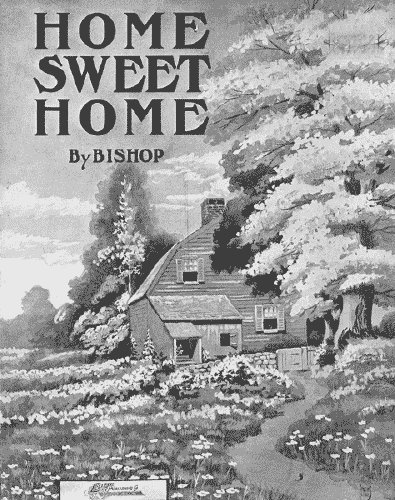 | Home Sweet HomeAlice Nielsen |
Writer(s): John Howard Payne (lyrics), Sir Henry Rowley Bishop (arranged) (see lyrics here) Introduced: May 8, 1823 First Charted: October 17, 1891 (John Yorke Atlee) Peak: 12 PM (Alice Nielsen) (Click for codes to charts.) Sales (in millions): 0.1 million (sheet music) Airplay/Streaming (in millions): -- radio, 0.68 video, -- streaming |
Awards (Payne):Click on award for more details. Awards (John Yorke Atlee):Click on award for more details. Awards (Alice Nielsen):Click on award for more details. |
About the Song:John Howard Payne was a descendent of one of the signers of the Declaration of Independence TY2 and a poet in New York City. SS He went to London to pursue acting, writing, and drama production. He teamed with Sir Henry Rowley Bishop to write an operetta called Clari or The Maid of Milan. It premiered on May 8, 1823, at Covent Garden. The production introduced the world to the song “Home, Sweet Home.” Maria Tree sang it at the end of the first act. TY2 It quickly became one of the most famous songs of the 19th century, spreading throughout England and the rest of Western civilization. TY2 Charles Hamm called it, “the most popular song of the entire century.” SS It definitely “cast an imposing shadow over all other sentimental ballads of the 1800s as perhaps the definitive symbol of nostalgia for one’s roots.” SS During the Civil War, the song was reportedly banned from Union Army camps because it might incite desertion. WK In 1821 and 1822, Bishop published several volumes of folk songs and was known to create tunes of his own based on authentic melodies. He created a tune called “A Sicilian Air” that became the basis of the melody for “Home, Sweet Home.” TY2 Another source says Bishop first used the melody for a piece called ‘To the Home of My Childhood,” published in the collection Melodies of Other Nations. SS The song charted multiple times in the pre-rock era with versions by John Yorke Atlee (#2, 1891), Harry MacDonough (#3, 1902), Richard Jose (#3, 1906), Alma Gluck (#6, 1912), Alice Nielsen (#1, 1915), and Elsie Baker (#10, 1915). PM The song has appeared in the musicals The Prodigal (1931), Let Freedom Ring (1938), First Love (1939), and Cairo (1942). In the Rodgers and Hammerstein musical The King and I, Anna teaches her students to sing the song. WK Disney’s 1958 animated film Lady and the Tramp features a “dog-howling rendition” of the song. WK Resources:
First posted 6/27/2024. |









